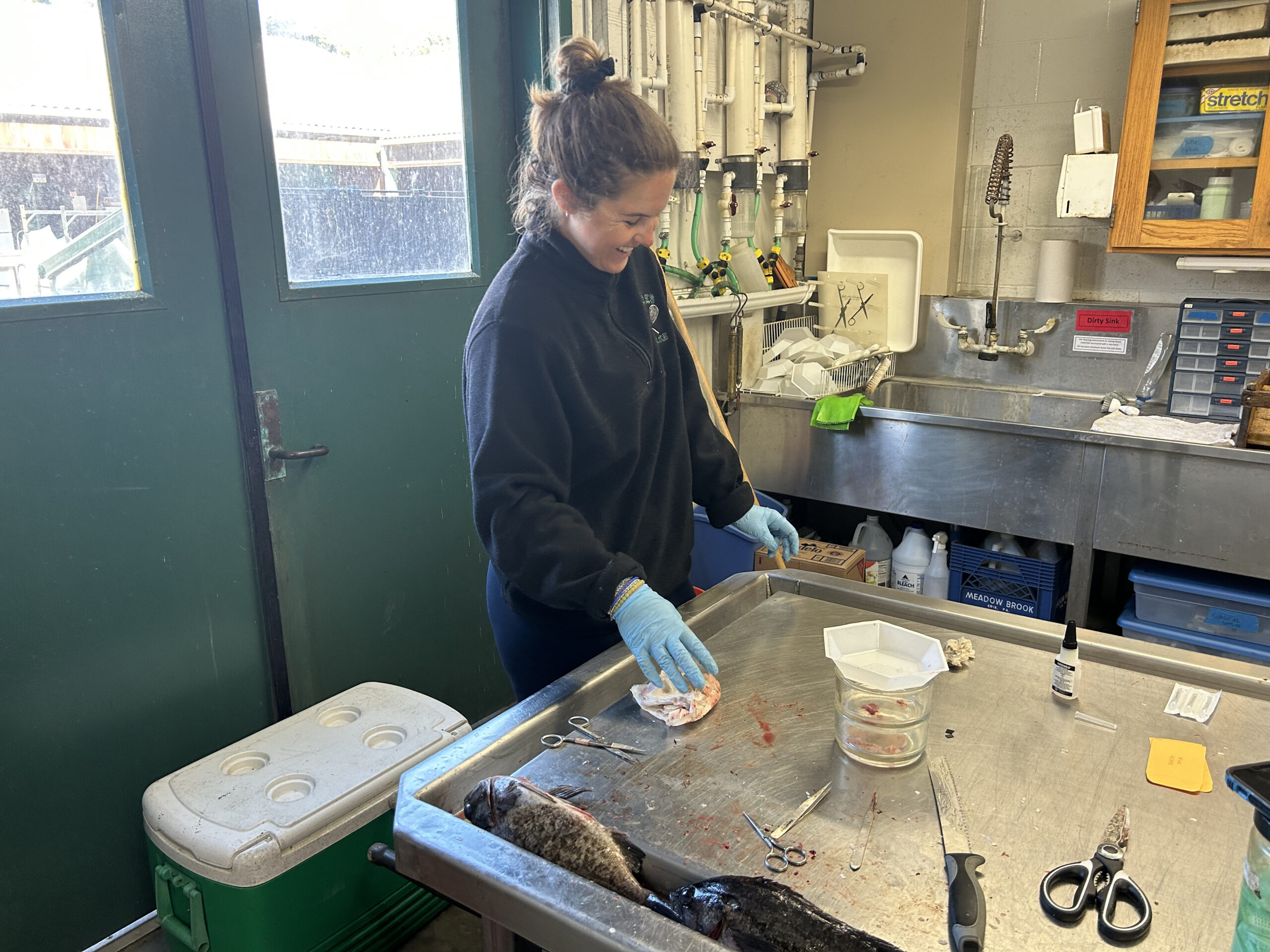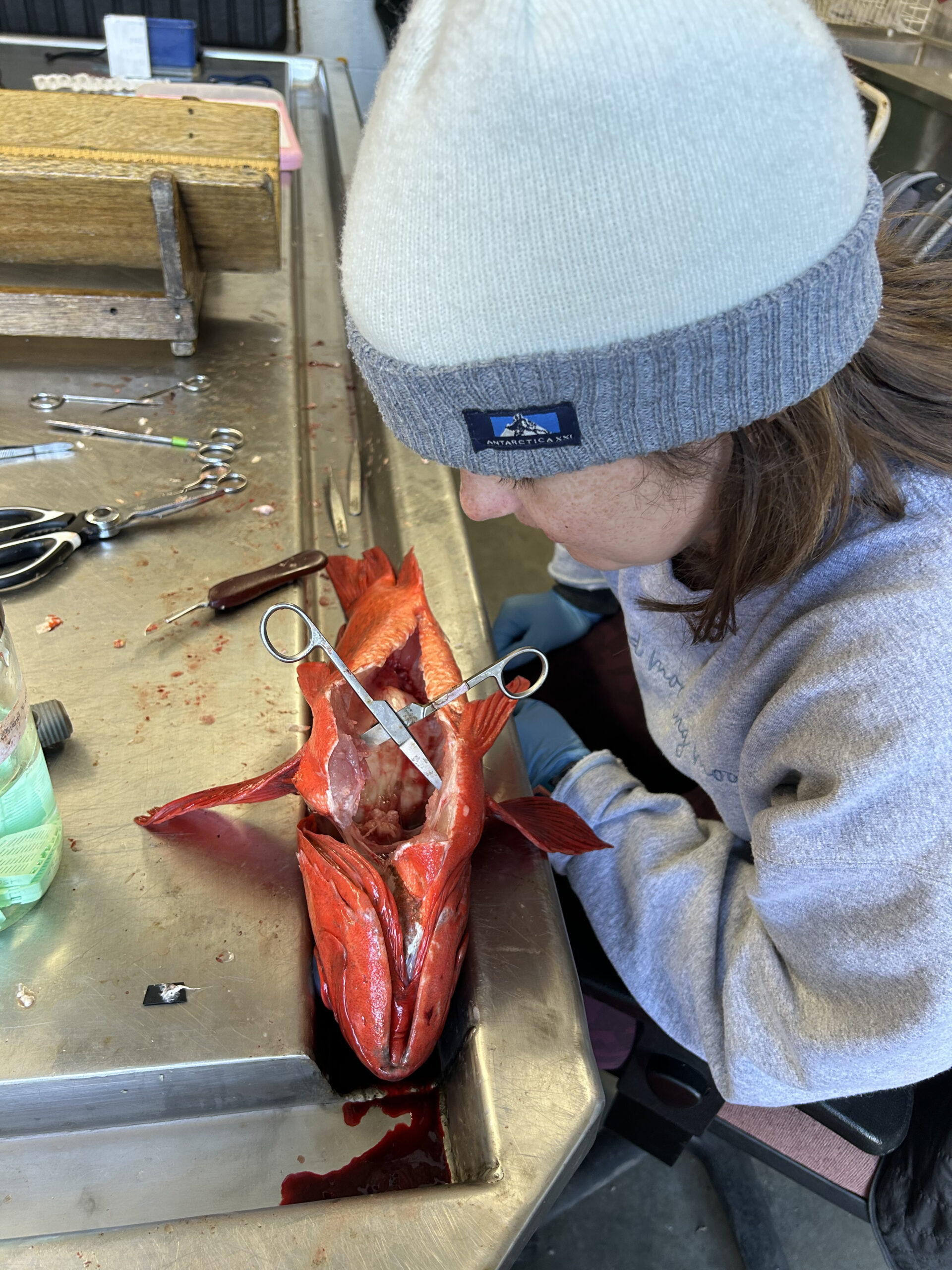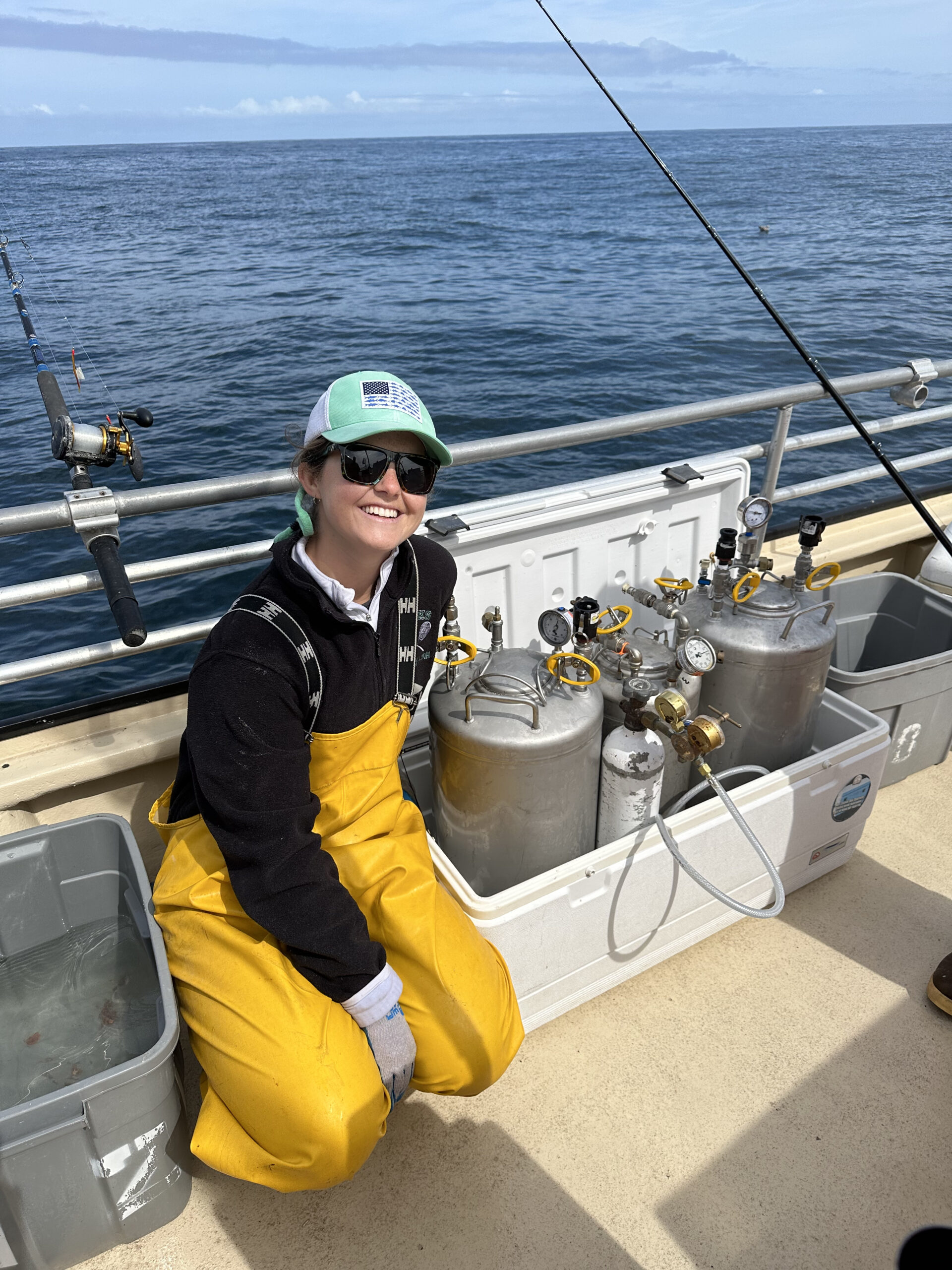"Swim Bladder Morphology Influences the Responses of Nearshore Rockfishes to Barotrauma"
A Thesis Defense by Molly Alvino
Fisheries and Conservation Biology Lab
Live-Stream | May 20th, 2024 at 4:00 pm PDT
Abstract
Rockfishes (Sebastes spp.) are ecologically and economically important fishes in the continental shelf and slope regions of the Eastern Pacific Ocean. All species within the Sebastes genus have a buoyancy organ, the swim bladder, which is sensitive to rapid changes in pressure that occur when fish are caught and brought up to the surface. Although all rockfishes have swim bladders, pressure-related injuries (barotrauma) affect rockfish species differently. To determine if swim bladder morphology can explain differences in barotrauma among rockfishes, semi-pelagic (Blue rockfish, S. mystinus and Olive rockfish, S. serranoides) and benthic (Gopher rockfish, S. carnatus and Vermilion rockfish, S. miniatus) species were captured via hook-and-line and manually recompressed using a hyperbaric chamber. Decompressed fish were sacrificed and seven different swim bladder morphological features were quantified and related to external barotrauma injuries observed at the time of capture. Benthic Vermilion rockfish displayed a greater incidence of barotraumatic injuries and had thicker swim bladder membranes with a higher tearing threshold than the semi-pelagic species. Conversely, the swim bladders of Blue rockfish were significantly thinner and more elastic than Vermilion rockfish, and experienced fewer barotraumatic injuries than both benthic species. Despite occupying different habitat zones and responding differently to barotrauma, many swim bladder measurements were similar between Olive and Gopher rockfish. Additionally, the number and severity of barotraumatic injuries significantly decreased as total length increased in Blue rockfish, consistent with a significant increase in tearing threshold and swim bladder membrane thickness with total length. This research furthers the understanding of pressure-related injuries among different rockfish species, while informing fishery managers of the swim bladder morphology directly impacting interspecific discard mortality rates.
Bio
Molly grew up in and around the water, and once she was introduced to SCUBA diving in high school, she knew it was what she wanted to do with her life. Following this passion, Molly went on to graduate from Northeastern University in 2020 with a B.S. in Marine Science. Wanting to explore the West Coast, she packed up and moved to California to attend Moss Landing Marine Laboratories within the Fisheries and Conservation Biology Lab. At MLML, Molly has worked on a number of different research projects including the California Collaborative Fisheries Research Program (CCFRP), Shallow Water Mini Landers, Benthic Observation Survey System (BOSS), Surf Zone sampling, and Rockfish Ocean Acidification. When she's not at the lab, you can find Molly doing Crossfit, trying out new food spots, or playing with her cat, Crouton.




